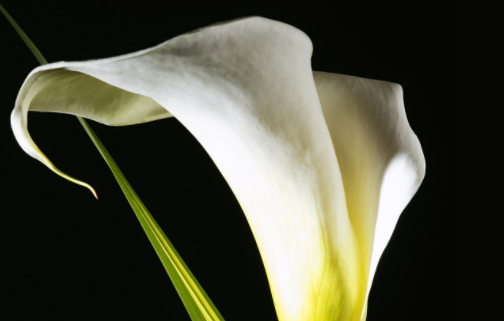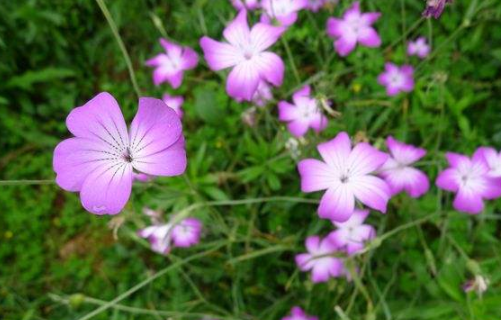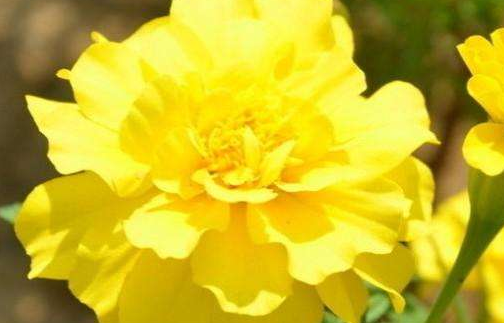How to raise sea taro flowers
soil
Calamus flower for the soil or some requirements, generally will choose rotten leaf soil, peat soil, river sand plus a small amount of retting cake fertilizer mixed with nutrient soil cultivation, if you feel their configuration trouble, you can also go to the flower shop to buy. The plants should be replaced once a year, and the time will be carried out in spring. After changing pots, the plants should be loosened, and then they should be loosened once a month, which is conducive to the growth of the plants.

temperature
Calamus flower likes warm environment, its most suitable growth temperature is about 20-30 degrees, the minimum can not be lower than 8 degrees, otherwise the plant will be frostbite. Summer temperature is too high, to often water the plant to keep the soil moist, the sun is too strong to shade the plant, which is very conducive to its growth, winter temperature is too low, the plant should be moved indoors for warm maintenance, the temperature should not be below 5 degrees.
illumination
Aloha flower is a kind of shade-tolerant plant, it prefers to grow in a semi-shady environment, so we can not put the plant under direct sunlight, which will not be conducive to the growth of the plant, to put it in a shady and ventilated place, at the same time to allow it to receive astigmatism, otherwise if the plant is over-shaded, the plant will grow excessively, thus affecting the beauty of the plant.
watering
Colocasia esculenta flowers like a humid growth environment, during the growth of plants not only the pot soil should be in a humid state, but also to ensure that the surrounding air humidity is above 60%. Summer high temperature to strengthen water spraying, for its creation of a relatively cool and humid environment, placed in the indoor air-conditioned hall potted calla flowers, not only to keep the pot soil moist, but also from time to time to spray some water to the leaves. If the winter room temperature can not reach 15 degrees should control watering, otherwise the plant is easy to rot roots, under normal circumstances, spray warm water once a week, so as to maintain its leaf color green.
The above is about how to raise the problem of taro flower introduction, is not difficult ah! Then don't hesitate, try it first, and soon you will get a beautiful pot of calla flowers.
How to cultivate sea taro flower, teach you to cultivate sea taro flower
There are many common names for taro flowers, such as taro, wolf poison flower, wild taro, taro, big root taro, big taro, taro, Tianmeng, as ornamental plants, it is called dripping Guanyin, the appearance of taro is simple and pure, white taro is fresh and soft. The flower language of taro is very beautiful, pure, happy, delicate, pure love. The calla itself also represents sincerity, simplicity, purity, and purity. So, do you want to know what kind of cultivation techniques can be used for sea taro flowers? Do you want to raise a good potato flower? Today, Xiaobian next we will come to know this kind of plant.
The flower language of calla flower
White taro to classmates, friends, flower language is youthful vitality; yellow taro to friends, flower language is friendship noble; orange-red taro symbol of love, please send to the right person, because its flower language is I like you. The appearance of calla is simple and pure, and the white calla is fresh and soft. The flower language of taro is very beautiful. It is pure, happy, delicate and pure love. The calla itself also represents sincerity, simplicity, purity, and purity.
How to raise sea taro flowers
Soil: calla available rotten leaf soil, peat soil, river sand plus a small amount of retting cake fertilizer mixed nutrient soil cultivation. Usually change pot once a year in spring, loosen soil once a month to keep pot soil in good condition.
Fertilization: calla is more fertile, 3~10 months should be applied once every half month liquid fertilizer, especially should increase the amount of nitrogen fertilizer, so that the leaves will grow as big as lotus leaves, smooth and pleasant. Fertilization should be stopped when the temperature is below 15 degrees.
Temperature: The growth temperature of calla is 20-30 degrees, and the lowest temperature can withstand 8 degrees low temperature. In summer, as long as the soil is kept moist, water is often sprayed, and the shade can still grow normally. In winter, the room temperature cannot be lower than 5 degrees.
Light: Colocasia esculenta is a shade-tolerant plant that likes a semi-shady environment. It should be placed in an environment that can both shade and ventilate. It should not be exposed to the sun to avoid large areas of burns.
Watering: Colocasia esculenta is particularly wet, the growing season not only requires the pot soil to be moist, but also requires that the air humidity is not less than 60%. In summer, water spraying should be strengthened to create a relatively cool and humid environment for it. The potted calla placed in the indoor air-conditioned hall should not only ensure that the soil in the basin is moist, but also spray water on the leaves from time to time. If the winter room temperature can not reach 15 degrees should control watering, otherwise easy to lead to plant rot roots, under normal circumstances, spray warm water once a week can keep its leaves dark green.
The above is what I know about herbs today. I hope that after reading this article, my flower friends will be helpful to you. If you want to know more about herbs and flowers, please continue to pay attention to our fleshy flower beds. We will provide you with more relevant content in the first time!
The sea lily flower picture complete sea lily flower language and the implication
Aloha flower is also called drip Guanyin is a poisonous ornamental plant, although toxic, but the plant shape is very beautiful, loved by many people, is a family and public places often appear a plant. There are also many colors of sea taro flowers, and the meanings represented by different colors will be different.
Flower language and meaning of sea taro flower
The flower language of calla flower is purity and happiness, but also symbolizes pure and simple love, just as we have experienced the green era, love and simple lovely.
White calla flower is like our student period, vigorous and full of youthful vitality, so it is suitable for our classmates and friends. Yellow calla flowers are more intimate, give our girlfriends, male girlfriends send a bunch of yellow calla flowers, let them feel you attach importance to each other's friendship! Orange-red calla flower passionate, with it to give the right person, to express their love is the best.
The role of sea taro flowers
1. The effect of sea taro flower
Dripping Guanyin is not only poisonous in juice, but also poisonous in dripping water, so it has the effect of removing dust. Also because of its toxicity, Dripping Guanyin can prevent insects and mosquitoes.
2. The medicinal value of sea taro flower
For cold and headache, it can relieve summer heat and refresh yourself. The taro root with wet paper wrapped and heated, in the forehead, back, wrist and ankle rub, you can feel comfortable smooth.
For abdominal pain. Fry 4 liang taro head, take 2 liang sweep tube leaf to add when fry boiling again, remove residue, quote can.
For rheumatism. Put camphor on thick potato chips, bake camphor with fire, and quickly put potato on rheumatism while the fire is still out.
3. Other effects of sea taro flower
The stem of calla flower is usually used as medicine to treat cholera, hernia, tuberculosis, rheumatic heart disease and other diseases. When used externally, it can treat edema, detoxification, snake bite, scald and so on.
If it is used with kerosene, it can treat neurodermatitis. Veterinarians usually treat cattle colds and swine erysipelas with begonia.
How to raise sea taro flowers
1, soil: calla available rotten leaf soil, peat soil, river sand plus a small amount of thoroughly retting cake fertilizer mixed with nutrient soil cultivation. Usually change pot once a year in spring, loosen soil once a month to keep pot soil in good condition.
2, fertilization: calla is more fertile, 3 to October should be applied every half month liquid fertilizer, especially should increase the amount of nitrogen fertilizer, so that the leaves will grow as big as lotus leaves, smooth and pleasant. Fertilization should be stopped when the temperature is below 15 degrees.
3. Temperature: The growth temperature of sea taro is 20-30 degrees, and the lowest temperature can withstand 8 degrees low temperature. In summer, as long as the soil is kept moist, water is often sprayed, and shade can still grow normally. In winter, the room temperature cannot be lower than 5 degrees.
4, light: sea taro for shade-tolerant plants like semi-shade environment, should be placed in both shade and ventilation environment, not in the sun exposure to avoid large-scale burns of the plant.
5, watering: calla is particularly wet, the growing season not only requires the pot soil to be moist, but also requires the air humidity to be not less than 60%. In summer, water spraying should be strengthened to create a relatively cool and humid environment for it. The potted calla placed in the indoor air-conditioned hall should not only ensure that the soil in the basin is moist, but also spray water on the leaves from time to time. If the winter room temperature can not reach 15 degrees should control watering, otherwise easy to lead to plant rot roots, under normal circumstances, spray warm water once a week can keep its leaves dark green.
How to eat sea potatoes
The roots of taro contain a lot of starch, which can be used for industry, but they must not be eaten raw. They must be fried with rice, fried to brown, and boiled for a long time (at least 2 hours) before they can be used.
Although the taro flower is poisonous, the rhizome has a lot of starch, which can be used for industrial purposes after processing. In short, the taro must not be eaten raw. In addition to this, sea taro flower has other functions and functions, such as treating cholera, hernia, etc., is a very wide range of plants.
- Prev

How to raise Mai Xianweng
Light Mai Xianweng is not a flower that needs careful maintenance, it likes sunlight very much, so during the growth period of the plant, it is necessary to let the plant receive enough light so that it can grow healthily, but remember to shade the plant in summer so as not to burn the leaves, but do not overshade, otherwise the plant will grow too much.
- Next

How to raise peacock grass
Peacock grass is a plant that likes light, and it needs plenty of sunlight when raising it. Generally, it can meet the light demand of peacock grass in spring and autumn, but we should pay attention to avoid direct sunlight in hot summer and shade at noon, but don't overshade, otherwise the plant will grow too much.
Related
- Fuxing push coffee new agricultural production and marketing class: lack of small-scale processing plants
- Jujube rice field leisure farm deep ploughing Yilan for five years to create a space for organic food and play
- Nongyu Farm-A trial of organic papaya for brave women with advanced technology
- Four points for attention in the prevention and control of diseases and insect pests of edible fungi
- How to add nutrient solution to Edible Fungi
- Is there any good way to control edible fungus mites?
- Open Inoculation Technology of Edible Fungi
- Is there any clever way to use fertilizer for edible fungus in winter?
- What agents are used to kill the pathogens of edible fungi in the mushroom shed?
- Rapid drying of Edible Fungi

